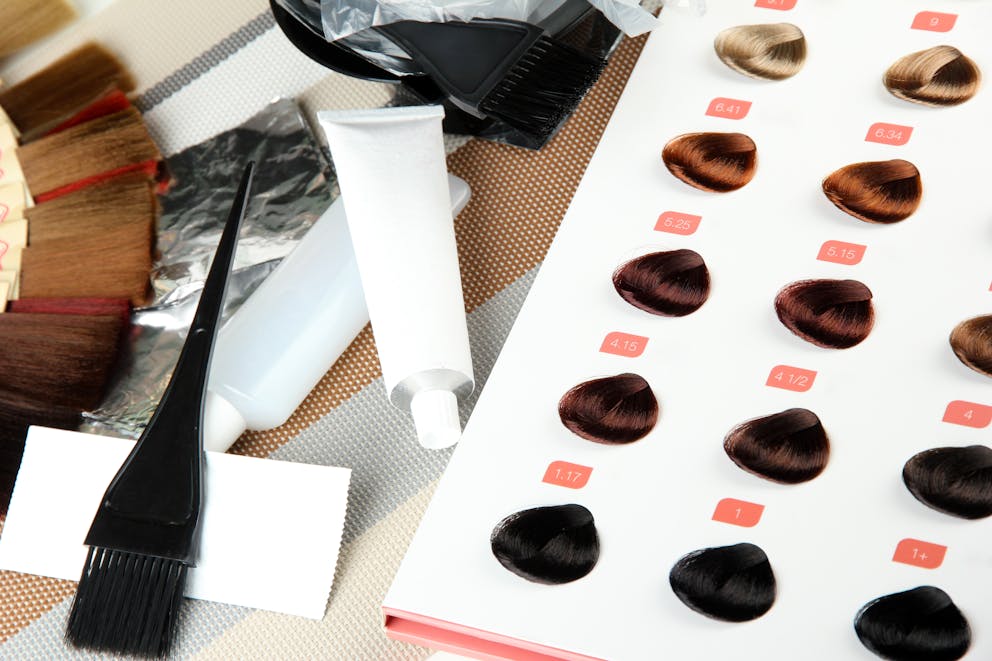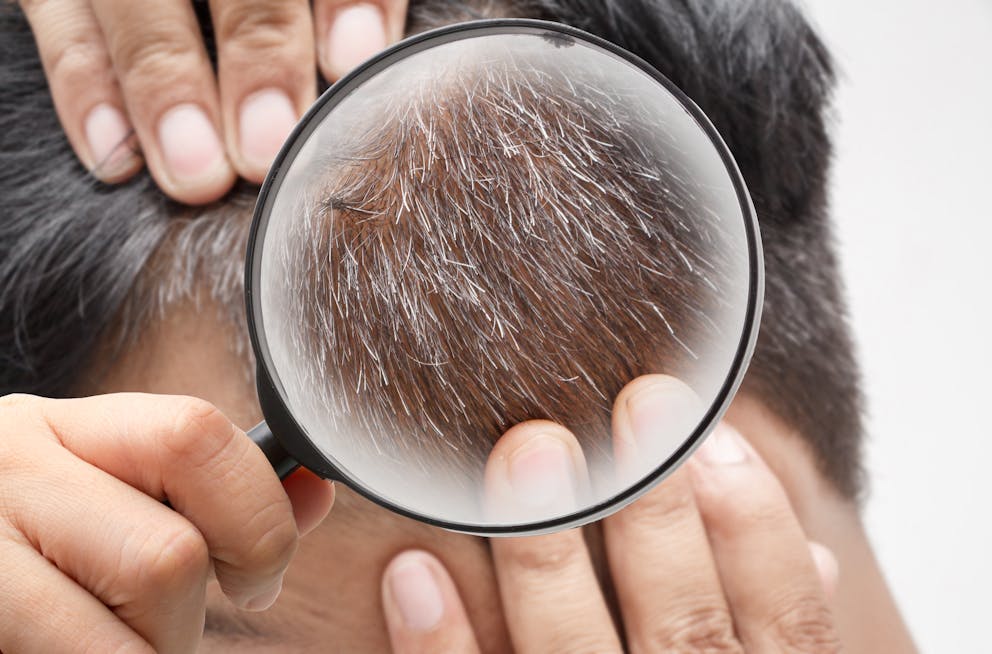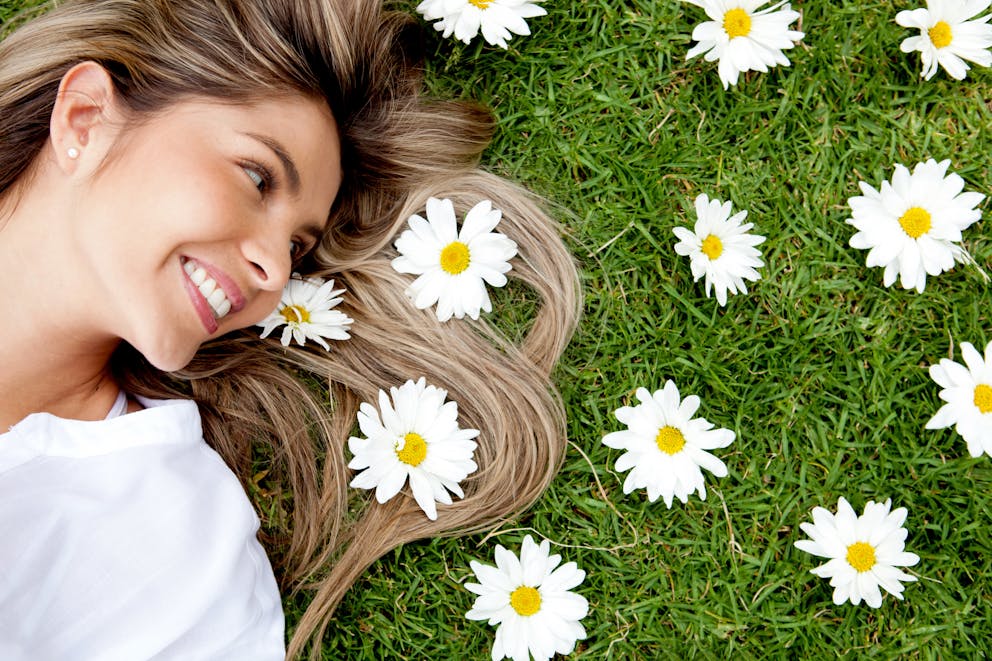Why You Should Use Organic Hair Dye
As information becomes more accessible, people increasingly question the health and safety of certain beauty products and opt to use organic alternatives.
Discover the hidden dangers of using conventional hair dyes and learn why choosing organic hair dye is best.

Conventional hair dye risks and side effects
According to a report published by Grand View Research, over 75 percent of women in the U.S. regularly dye their hair.
With such widespread use, the integrity and safety of these products is often assumed. However, there are significant concerns regarding their long-term health effects.
Here are potential side effects associated with exposure to some of the toxic ingredients found in many conventional hair dyes.
1. Common allergy trigger
Para-phenylenediamine (PPD), a standard hair dye ingredient, can induce contact allergy symptoms such as irritating redness, scaling, or blisters on the scalp, face, and hands.
In rare instances, exposure to hair dyes can trigger severe life-threatening allergic reactions such as angioedema, which causes significant swelling beneath the skin, can compromise digestive functions, and, in extreme cases, cause closure of the throat.
2. Linked to hair loss
A report published in Pediatric Emergency Care linked hair dye-induced allergic contact dermatitis with subsequent hair loss due to oxidative stress caused by ingredients such as hydrogen peroxide, monoethanolamine, and PPD.

3. May increase cancer risk
"The surface of your skin is regularly exposed to over 5,000 chemicals from various beauty products, including hair dye,” explains Dr. Berg. “These include harmful substances such as ammonia, parabens, PPDs, and formaldehyde, linked to an increased risk of cancer.”
A study published in the International Journal of Cancer reported a 45 percent increase in breast cancer risk among black women utilizing permanent hair dyes and a seven percent increase among white women.
In addition, research published in the Journal of the National Cancer Institute correlated prolonged use of permanent black hair dye with an increased risk of fetal cancers such as non-Hodgkin's lymphoma and multiple myeloma.
4. Other potential toxic side effects
According to evidence published in Chemical Research and Toxicology, hair dyes often contain ingredients with various other toxic effects.
Here are the potential risks and side effects associated with regular hair dye products:
Skin irritation
Skin depigmentation
Ocular irritation
Cellular toxicity
Kidney damage
Metabolic imbalances
Reproductive and developmental toxicity
Intestinal lesions
Impaired oxygen transport
Watch the video below to learn what to do before coloring your hair.
What is organic hair dye?
As the name implies, organic hair dyes are made with organic and non-toxic ingredients.
When choosing organic hair dye, it's critical to understand that the term organic isn’t strictly regulated in the beauty industry.
This means hair care products can be described as organic even if they only contain a small percentage of organic ingredients.
You may have heard of natural hair coloring alternatives such as ayurvedic herbs and products like henna. However, just because they’re naturally derived doesn't mean they are organic, and these dyes can include potentially harmful ingredients.
How to find organic hair dyes
Here are three ways to help verify the legitimacy of hair dye brands claiming to be organic.
1. Certifications
To ensure you're selecting authentic organic products, prioritize those labeled 100 percent organic and are certified by reputable bodies such as USDA Organic, ECOCERT, or COSMOS.
Not all certifications guarantee 100 percent organic content, and it’s crucial to review each organic verification seal to discern the best product.

2. Ingredient transparency
Selecting a chemical-free natural beauty product requires carefully checking the ingredient lists.
It’s important to note that chemical-free typically means that the product is free from certain synthetic chemicals known to be harsh or dangerous, not that it’s free of all chemicals, which underscores the value of having access to a complete ingredients list.
Choose brands that clearly list all ingredients and avoid vague terms like fragrances or colorants, as these can contain numerous chemical compounds.
Genuine organic hair dyes should avoid synthetic ingredients such as resorcinol, ethanolamines (MEA, DEA, TEA), peroxide, parabens, PPD, sulfates, aminophenol, diamine-benzene, and metallic salts, including lead acetate, silver nitrate, as well as heavy metals such as lead, arsenic, mercury, and nickel.
3. Natural colorants
When coloring hair, choose dyes derived from natural ingredients such as amla, acacetin, beetroot, black tea, carrot, cassia, chamomile, coffee, henna (without PPD), indigo, quercetin, walnut shells, carotenoids such as lutein from marigolds, and curcuminoids derived from turmeric.
While these offer a safer alternative, they aren't without risks, as ingredients like henna can trigger allergic reactions, such as contact dermatitis, in sensitive individuals.
Moreover, research published in Molecules reveals that certain natural dyes can contain heavy metals.
If you are prone to allergic reactions or chemical sensitivities, it’s recommended always to consult a healthcare provider to identify potential allergens and ensure the safe use of natural hair dye options.

Reasons to switch to organic hair dye
Considering the abundance of carcinogenic and toxic chemicals in conventional hair dyes, there are several good reasons to switch to organic options.
Here are three benefits of making the switch to organic hair color.
1. Reduced chemical exposure
Organic hair dyes typically contain fewer harsh chemicals, making them a much safer coloring agent.
Limiting exposure to potentially toxic chemicals helps minimize health risks associated with these compounds, such as asthma, hormonal disruptions, oxidative stress, and chronic inflammatory conditions.
2. Healthier hair
Many organic and natural hair dye options include compounds with potent antioxidant, anti-inflammatory, and antimicrobial properties, which can help support hair health.
3. Minimized risk of allergic reactions
Organic hair dye contains fewer synthetic chemicals and known irritants and, therefore, is less likely to cause allergic reactions, skin irritation, or sensitivity.

Natural gray hair prevention tips
Aging involves biochemical and physiological changes in the body over time. However, certain lifestyle changes can support the body through the aging process and potentially slow down its effects on hair.
Here are a few techniques you can implement to help prevent graying hair.
Stress management
The hormonal changes linked to chronic stress can significantly contribute to premature graying.
Elevated cortisol levels can deplete the body's antioxidant defenses, potentially leading to an excess of damaging substances such as hydrogen peroxide in the hair follicles.
This can bleach hair shafts and inhibit the production of melanin, the pigment responsible for hair color.
Try to incorporate relaxation and stress-management practices such as deep breathing and stretching exercises to help reduce stress-induced hormonal imbalances.
Dietary changes
Eating a nutrient-rich diet can help counterbalance the effects of aging.
Foods high in antioxidants, including vitamins C and E, can help strengthen the body's defenses against oxidative stress linked to the depigmentation of hair.
Furthermore, including foods like mushrooms, oysters, liver, and various seafood is an excellent way to increase dietary copper, which supports the activity of tyrosinase, an enzyme vital for hair pigmentation.
In addition, beneficial gut bacteria help synthesize B vitamins that are crucial in maintaining hair's natural pigment.
By increasing probiotic food intake, you can help support a healthy gut microbiome and promote the synthesis and bioavailability of B vitamins needed to retain hair color.

Key takeaways
Opting for certified organic hair dye minimizes your exposure to potentially carcinogenic and inflammatory chemicals, which can trigger severe allergic reactions, lead to hormonal changes, and increase the risk of various chronic diseases.
When searching for organic products, look for credible certifications and verify they are formulated with safe ingredients.
Switching to certified organic hair dye products can help improve hair quality, reduce exposure to harmful chemicals, and support a healthy body.
FAQ
1. Is it better to use organic hair dye?
Yes, organic hair dye is generally better than conventional hair dye as it usually contains fewer aggressive chemicals, which helps reduce the risk of health issues.
2. Why is organic hair dye safer?
Organic hair dye avoids harmful ingredients such as ammonia, formaldehyde, PPD, and peroxide, which are linked to various health risks, including allergic reactions and an increased risk of cancer.
3. How long does organic hair dye last?
Organic hair dyes typically don’t last as long as their synthetic counterparts and require more frequent applications. However, the color's lifespan depends on the product used, how often the hair is washed, and hair care routines.
4. What is the healthiest hair dye to use?
The healthiest hair dyes are those with organic certifications, free from synthetic additives and toxic ingredients.
5. What is the best organic hair color?
The best organic hair color depends on your hair type, hair care routine, and desired end result.
However, it’s recommended to opt for products with complete transparency about their ingredients and are labeled as 100 percent certified organic.
Sources
Previous blog
How to Lower Protein in Urine: What You Need to KnowTags

Popular
08/21/2024
53.6K views
02/23/2025
45.4K views
11/18/2024
270.1K views
03/18/2024
11/21/2022




